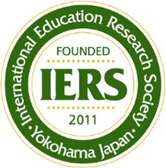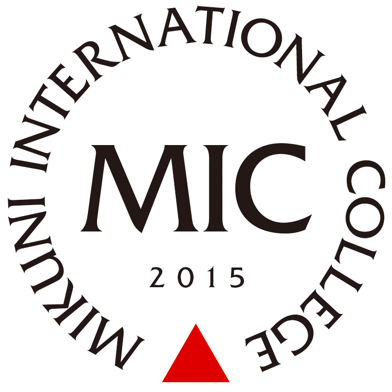This content has been archived. It may no longer be relevant
Everything you need to know
about the LTL Internship

What is this Internship All About?
The word “internship” can be defined as, “a job training for a professional career,” and as such, each applicant should apply with the understanding that they are expected to act in the utmost professional manner. This program is not to be viewed as a replacement for BYU’s Study Abroad Program (more information about the Study Abroad Program can be found here).
The Study Abroad Program is for students looking for a more structured cultural expedition of Japan. The LTL Internship is for students looking for a more self-motivated and self-conducted experience of Japan’s business and teaching environments. While both programs offer a unique insight into the beauty of Japan, we encourage those students whose exclusive goal is to tour around Japan to refrain from applying for this Internship, and instead direct their sights to the above mentioned Study Abroad Program.
The LTL Internship is hosted by the Non-Profit Organization IERS, which stands for The International Education Research Society. The utmost aim and goal of this organization is to help youth build upon the necessary foundation of English ability. As an intern for this organization, you will be expected to focus on achieving this standard and not prioritizing your own. Through teaching English to Japanese students from all over the country, you will be able to increase your understanding of second language acquisition, get your foot in the door of international business, and gain marketable teaching experience.
For more information on the Japanese business etiquette you will be expected to follow and observe, please read this instructive article.
Spring and Summer Terms
During the Spring and Summer Terms, there are two LTL Internship Experiences : The Intensive Program and the Mikuni Campus Location. The differences between the two experiences are further outlined in the following infographic:


Fall and Winter Semesters
During the Fall and Winter Semesters, BYU interns will be exclusively sent to teach at the Mikuni International College campus. There are no other teaching locations available during these times of the year. The Mikuni campus, located in rural Japan, is a privately owned English immersion school that allows interns to gain unique hands-on teaching experience. Interns will be able to apply what they have learned in their teaching methodology course (Japan 377). They will also come to better understand the logistics behind language teaching as they help create a completely immersive English environment for their Japanese students.

Apply through BYU's Kennedy Center
Applications for the LTL Internship can be completed online through Brigham Young University’s Kennedy Center. Complete the online application at http://kennedy.byu.edu/apply/.
In this application, you will need to log-in using your BYU net ID. If you do not have a net ID, you may create one here.
For the LTL Internship application process, you will be asked to submit the following :
- List of academic references (basic contact information from 2–3 professors, counselors, employers, etc.)
- Resume (may be provided electronically)
- A short letter of intent for the LTL Internship Program
- A $35 application fee
Your application will not be complete until you pay the nonrefundable application fee. This may be paid by check, e-transfer, or credit card.
Students will be notified via e-mail of their acceptance into the program, via BYU’s Kennedy Center.

Contact Information
Masakazu Watabe, the Japanese Internship Coordinator and Professor of Japanese, is the faculty mentor for the program.
For more detailed information about the LTL Internship, call him at 801-422-2945, or email him at masakazu_watabe@byu.edu.
Interested students should contact:
Brigham Young University
International Study Programs
101 HRCB
Required Pre-Requisites
Students are required to take a teaching methodology course (JAPAN 377) prior to departure.
Accepted students are required to participate in a preparation course (IAS 369R, 1 credit hour). This second-block evening course will be held during winter semester.
Accompanying spouses need to be credit-bearing participants on the program.
Spouses will also need to apply online and take the preparation course.
Courses and Credit Hours
Interns are to enroll in twelve credit hours for winter or fall semesters. For spring-summer terms, interns should be enrolled in at least twelve credit hours as a combined total during their internship in Japan. (At least 6 credit hours in Spring Term, and at least 6 credit hours in Summer Term).
One course that is required to be taken during the internship is JAPAN 399R Academic Internship (6 credit hours).
As students prepare for their internship in their IAS 369R course, they will be able to discuss and choose other course offerings for the program with Professor Watabe.
The experience will be for both spring and summer terms combined, or all of the Fall or all of the Winter semester.
Funding and Scholarships
Regular BYU tuition scholarships, Pell Grants, and Federal Insured Student Loans may be applied to study abroad programs.
Academic departments and colleges may assist with scholarships and grants.
Private grants and scholarships outside of BYU may also assist (see http://kennedy.byu.edu/scholarships)
As of 2015, anyone who is majoring within the College of Humanities at BYU is eligible for a $2000 scholarship. Anyone who has a minor within the College of Humanities is eligible for a $1000 scholarship. Apply online at: https://humplus-funding.byu.edu.
THE BASICS & WHAT YOU NEED TO KNOW
I haven't taken JAPAN 377. What should I do?
All interns are required to take a teaching methodology course (JAPAN 377) prior to departure. This class may not be available every semester, so please plan accordingly.
The purpose of JAPAN 377 is to prepare students to teach at their various locations throughout Japan. Without this class, you will be considered an “un-trained” Intern, and as such, the teaching positions available to you will be limited. You will not be considered for the Intensive Program (even if you want to come during the Spring/Summer Terms), and instead will be sent to the Mikuni Campus location.
As an “Un-trained” Intern at Mikuni International College, you will not be offered as many teaching opportunities, and your ability to have a complete internship experience will be limited. As such, it is strongly suggested that you refrain from trying to go on this LTL Internship until after taking JAPAN 377.
Will I be able to travel around Japan?
While it is true that you will have control of your own time outside of the classroom, be warned that this internship is just that – A professional internship. It is not to be viewed as a replacement for BYU’s Study Abroad Program. As such, you may not take spontaneous trips around Japan during your time as an Intern. You may travel to locations close to your city, but you may not travel to Kyoto, for example, for a week randomly during your teaching experience. Teaching, not touring, must always be your first priority.
That having been said, after your internship officially ends, you may stay in Japan doing whatever you please until your 90 day Tourist Visa expires. This would be the appropriate time to use a JR Pass (see below for more information) if you so choose to purchase one. Any money spent during these trips must come from your personal funds, and will not be provided by IERS.
How do I get a Visa?
For US citizens, all you need to do is show up in Japan and tell the customs officer where you are going. In this way, you can get a tourist visa very easily. No paperwork. Citizens from other countries will need to research about possible paperwork for visas.
Keep in mind that Tourist Visas last for only a total of 90 days. The 90-day countdown will start from the day you arrive in Japan, including that day.
Money?
Every Intern will receive an upfront monetary stipend that will cover the cost of living expenses in Japan. This cash amount will be all that you receive for your whole Internship experience, and as such, it is up to you to budget your funds wisely. If you spend it all in the first month, IERS will not provide you with any more.
In order to help you budget your funds, we have taken the liberty of creating a spreadsheet that you can download here. This will help you make sure that you do not run out of money and always have enough for your living needs.
What should I pack?
Check out this packing list for a detailed descriptions of what you will need to bring with you to Japan.
I will need to eat; what is the situation?
For The Intensive Program:
If you are in a homestay situation, you will need to work out specifics with your homestay family for what meals you will eat with them and what you will be expected to make or take care of on your own. That may already have been arranged before you arrive.
If you are living in an apartment, you will get more money for food than those in homestay situations. You will need to prepare your own meals or eat out.
For the Mikuni Campus Location:
At Mikuni we will be making dinners and lunches together with students. You will still receive some stipend to use on travel and/or eating out.
Where can I go for cool info about Japan?
japan-guide.com is a favorite. It has an insane amount of information about everything you will need to know about living in Japan. It is written by foreigners in Japan for foreigners in Japan. It’s wonderful.
TEACHING & LEARNING
What will I be teaching and where can I find the materials?
For the Intensive Program:
The two most commonly taught courses for the Intensive Program are ENGL 101, 102, and 201. ENGL 101 and 102 are courses focused on speaking and listening, whereas ENGL 201 is a course focused on reading and writing.
The necessary textbooks and teaching materials can be found here. For the access password, please email Mikuni’s Vice Principal, Katherine Hilker, at her email, katherine.hilker@mikuniinternational.org.
You will be expected to start planning lessons and preparing to teach long before coming to Japan. Do not just throw together haphazard last-minute lessons, as this will reflect badly on not only you, but on Mikuni International as a whole.
For the Mikuni Campus Location:
The specifics of what each Intern will be teaching differs from semester to semester. As such, it is vital that you please contact Mikuni International’s Vice Principal, Katherine Hilker, at her email, katherine.hilker@mikuniinternational.org. She will provide you with all of the necessary information on what you will be teaching and how you can prepare.
Again, you will be expected to start planning lessons and preparing to teach long before coming to Japan. Do not just throw together haphazard last-minute lessons, as this will reflect badly on not only you, but on Mikuni International as a whole.
What does my daily schedule look like?
For the Intensive Program:
Although schedules will differ based upon your location, you can expect that your regular daily schedule will look something like this:
Morning-5:30 pm: You choose what to do. Homework, travel, hang out with new friends, go to onsen, hike, visit temples/shrines, shop, cook, whatever.
But also remember that you should not let your personal endeavors get in the way of your Internship — this means that you should always put preparing lessons and the professional aspects of your Internship first before you do anything fun.
5:30 pm – 6:20 pm: You will teach a religious-focused class. Sometimes Interns read from the Book of Mormon (for more advanced English students) or Preach My Gospel (for more beginning English students).
6:30 pm – 7:20 pm: You will teach one class, either reading or writing.
7:30 pm – 8:20 pm: You will teach the other class. either reading or writing (whatever you did not teach in the previous block).
8:20 pm – After: More free time.
For the Mikuni Campus Location:
8:00 am – 8:50 am: You will teach a religious-focused class. Sometimes Interns read from the Book of Mormon (for more advanced English students) or Preach My Gospel (for more beginning English students).
9:00 am – 10:50 am: You will teach various classes during these time blocks. The specifics differ from semester to semester. For more information on what classes you will be teaching, please contact Mikuni International’s Vice Principal, Katherine Hilker, at her email, katherine.hilker@mikuniinternational.org.
11:00 am – 1:00 pm: You will prepare and eat lunch with the English Students.
1:00 pm – 2:50 pm: More classes will be taught during this time. Again, the specifics differ from semester to semester.
4:00 pm – 6:00 pm: You will prepare and eat dinner with the English Students.
7:00 pm – After: Free time.
I’m only teaching three hours a day…What else do I do?
The most important thing is making sure your lessons are prepared before class and that you always are professional in your conduct. The next important thing is improving your Japanese. Improving your Japanese should come from a combination of doing your homework and meeting and talking with Japanese people.
Lots of Japanese stores and places to visit are closed in the morning (except コンビニ, which are ubiquitous and open all the time) so I would recommend getting your the studying and lesson preparations done in the morning and doing your adventuring later in the day (but before class). If you do that, you’ll find yourself with lots of time to do what you want and you won’t have homework to do when you get back from Japan.
So, you’ve got afternoons… what to do in the afternoon? Interact with people in Japanese. Shop (or just browse stores so you don’t spend all your money super fast), visit shrines and temples, go out to eat (but makes sure to keep track of how much money you spend) go to ward activities, get to know the YSAs in your area and hang out with them (good way to learn colloquial Japanese and make friends), go to arcades, check out Book-Off (a fun used books/manga/dvd/game store), and go hiking, biking, and to hot springs, temples, shrines, historical sites, and other cool places..
Intensive Program Only: We have no projector where I am teaching. Now what?
TeamViewer is a free screen-sharing app we use sometimes to help students see your presentations on their own devices (tablets, phones, and computers are all compatible).
Go to this link to download the app.
TRAVEL & TRANSPORTATION
How do I find train schedules?
Public transportation is not cheap; can I get a discount?
JR Pass? What is it and should I buy one?
Onsen?
They can be surprising experiences at first (most Americans aren’t used to being naked with a lot of other people), but you can come to love them. They can be a great way to experience Japanese culture and to just relax.
銭湯 (sentou or bath houses) are also really nice. They aren’t necessarily naturally heated water, but they can also provide a unique experience and usually have a ton of different baths of varying temperatures.
I want to travel. Where should I stay?
Sapporo sounds like a rad city. How do I go there?
http://www.jetstar.com/jp/en/h
Should I bring omiyage (souvenirs) ?
Absolutely yes. It doesn’t need to be big, but do bring some little things to give to people during your stay in Japan. Perhaps it will be your homestay family (if you are part of the Intensive Program), the bishop of the ward you are visiting, or a new friend you meet who is particularly nice. Just keep some little gifts to give. Japanese people love to give and receive gifts – it is a large part of their culture. Our recommendation is to bring chocolates from the US. Most everyone likes chocolate. Other food items could also work, but you cannot bring fresh, non-packaged foods into Japan. Perhaps some other trinkets unique to Utah or your home state could work, too.
TECHNOLOGY & ELECTRONICS
What happens if I have an Emergency while in Japan? Who do I contact?
Do I need a Cell Phone?
How can I charge all my electronics?
Japanese plugs look and work like American plugs, but they all only have 2 prongs instead of 3. You can get converters in Japan (3 prongs in, 2 prongs out) for about 3 dollars. Somewhere in the US probably sells them, too. But you need to make sure that the prongs are the same width on the American converters. Most US sets have the two flat prongs at different widths. In Japan they are the same size. Most electronics (laptop/tablet/phone chargers) will allow different voltages to go in, but do be aware that Japan uses a different voltage than the US.
For the Mikuni Campus Location: Converters will be provided.
Wi-fi?
Some of the JR pass companies let you rent a pocket wi-fi device. It’s something you carry with you. It connects to local cell towers and broadcasts a wi-fi signal you can connect to with your tablets, laptops, iPods, smartphones, or whatever device you have. It is not cheap, and as such, will not be covered by IERS. All your apartments and school locations should have wi-fi already, so pocket wi-fi should really be unnecessary.
If you’re teaching in a church building, then the password for the church’s wifi is: Pioneer47. It’s the same password used in every Church building in the world.
For the Mikuni Campus Location: Wi-fi is provided in all apartments and on campus.
Are there any apps that might be useful for my time in Japan?
- Travel Japan Wi-fi (free wi-fi in TONS of places around Japan) http://wi2.co.jp/tjw/en
glish.html - Maps.ME (lets you download maps so you have a working GPS without a wi-fi connection. Shows many landmarks and gives directions) http://maps.me/en/
home - Hyperdia (train schedules) iOS — Android